How to Get Rid of African Lovegrass in Your Lawn
African Lovegrass (Eragrostis curvula) is a tufted, grassy weed that’s most prevalent in Australian pastures and grazing land, but it can impact home lawns too. Originally ...

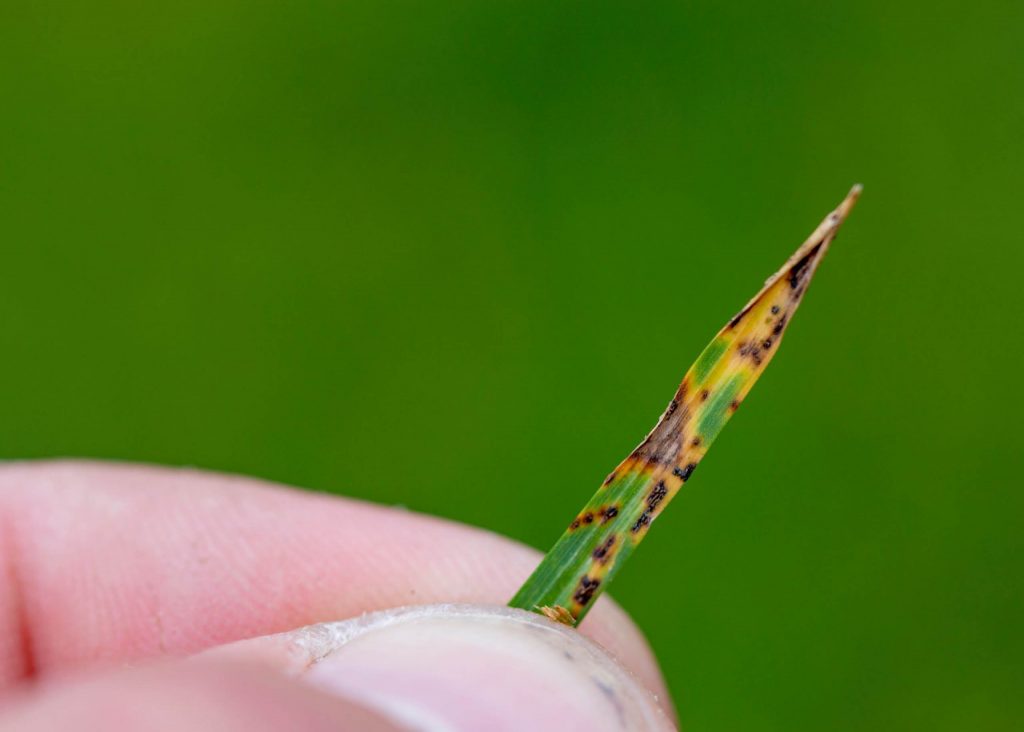 If you live in an area prone to high rainfall and humidity, your lawn has probably experienced fungal disease, even if you didn’t recognise it.
If you live in an area prone to high rainfall and humidity, your lawn has probably experienced fungal disease, even if you didn’t recognise it.
But fungal diseases aren’t limited to warm wet areas and can also appear when conditions are cool and dry.
The emergence of fungal disease in your lawn is usually a sign it is under stress, often from extremes of temperature and moisture, night watering, scalping, poor nutrition, soil compaction or chemical damage from misuse or overuse.
Sometimes what might look like a fungal disease is actually caused by pests or weeds, so accurately identifying what’s responsible is the first step to getting on top of it.
Common types of lawn fungus to watch out for include:
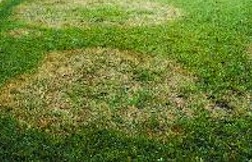 Brown Patch can appear as a small or large circular patch at temperatures of 15-20 degrees in spring and autumn. It is worse in poorly drained or overwatered soils and can develop within a matter of hours. Affected leaves are water soaked and dark purplish-green and a slightly grey outer ring can develop.
Brown Patch can appear as a small or large circular patch at temperatures of 15-20 degrees in spring and autumn. It is worse in poorly drained or overwatered soils and can develop within a matter of hours. Affected leaves are water soaked and dark purplish-green and a slightly grey outer ring can develop.
Look for fungicides containing the active ingredients chlorothalonil, iprodione, or penthiopyrad.
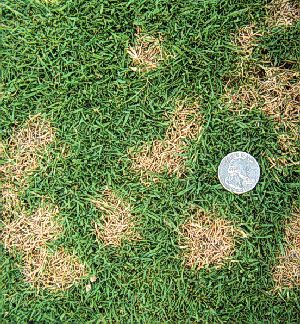 Dollar spot often starts as small pale, sunken patches up to 6cm across, which merge into larger irregular patches as the disease spreads and intensifies. It’s most common in the warmer months at temperatures of 15-30 degrees when humidity is high and can be more serious when nitrogen is inadequate.
Dollar spot often starts as small pale, sunken patches up to 6cm across, which merge into larger irregular patches as the disease spreads and intensifies. It’s most common in the warmer months at temperatures of 15-30 degrees when humidity is high and can be more serious when nitrogen is inadequate.
Look for fungicides containing the active ingredients chlorothalonil, propiconazole, pydiflumetofen, or penthiopyrad.
Fairy rings develop as circles of faster growing grass in moist patches with a thicker layer of thatch and are often accompanied by mushrooms or toadstools. They can be more severe on less fertile light soils in lower rainfall areas.
Helmo, which is short for Helminthosporium, can appear as a black or white spot disease caused by one of four different species. It is short-lived and requires leaf wetness for extended periods at temperatures of 15-18 degrees. The spots are surrounded by yellowing tissue and left untreated can cause dead patches.
Look for fungicides containing the active ingredients tebuconazole and trifloxystrobin.
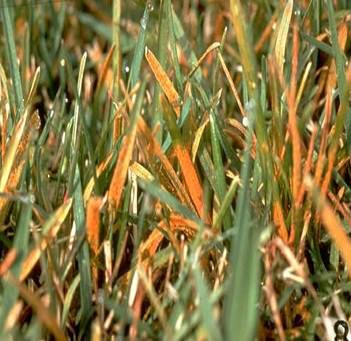 Rust will attack both healthy and stressed turf, starting as orange to red spores under the leaf blade and spreading down stems during cool, wet conditions. Untreated it weakens plants and makes them more susceptible to other diseases.
Rust will attack both healthy and stressed turf, starting as orange to red spores under the leaf blade and spreading down stems during cool, wet conditions. Untreated it weakens plants and makes them more susceptible to other diseases.
Look for fungicides containing the active ingredients iprodione or propiconazole.
Slime Mould can smother grass blades in small dusty spores that may be white, yellow, pink, purple or grey. It can resemble dog vomit and flourishes in cool, wet and humid weather, where there is excessive thatch and lawn is not regularly mown. It’s not harmful and grass will usually recover once conditions dry out.
Spring dead spot often appears in early spring as circular pale dead patches and can recur in the same spot season after season, especially in couch lawns. It thrives in cool wet conditions and temperatures about 15 degrees.
Look for fungicides containing the active ingredient penthiopyrad.
There’s a guide to preventing and managing these and other common lawn diseases.
 The best time to apply fungicide will depend on whether you’re using a contact fungicide or a systemic fungicide.
The best time to apply fungicide will depend on whether you’re using a contact fungicide or a systemic fungicide.
It is usually early in the morning – before bees are foraging – and more than 24 hours before rain is expected.
The spray must be able to dry, but avoid spraying when it’s windy or conditions are otherwise likely to encourage spray drift onto fruit and vegetable gardens.
It might be necessary to spray more than once if conditions favourable to disease persist, but don’t use the same product each time.
Alternate between contact and systemic fungicides as well as using fungicides from different modes of action groups to avoid the development of resistance which can make chemicals less effective.
Always read the product label and follow its instructions for application and safety precautions. Some fungicides registered for turf diseases are not permitted for use in the home garden.
Some fungicides are less toxic than others, but you should always wear gloves, eye protection, boots and avoid skin contact when applying any chemicals to your lawn or garden.
Keep children and pets off your lawn for at least 24 hours after application. There’s more information about treating lawn diseases.
An actively growing healthy lawn is the best defense against pests, weeds and disease.
Some weeds can harbour disease-carrying pests, so keep on top of them as well.
Your lawn care maintenance program should include regular mowing, aeration and thatch removal, application of fertiliser and deep, infrequent watering. You can read our guide to turf maintenance and lawn care.
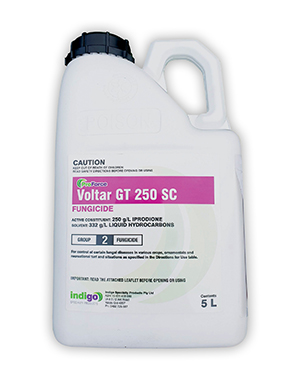
Indigo Voltar GT 250 5L is a broad-spectrum fungicide containing the active ingredient iprodione (250g/L) and is suitable for Zoysia, Kikuyu, Couch and Buffalo grasses.
SHOP NOW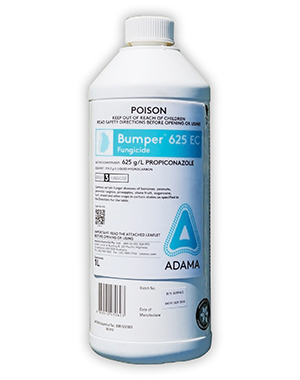
Adama Bumper 625EC 1L contains the active ingredient propiconazole (625g/L) and is suitable for use on Couch grasses.
SHOP NOW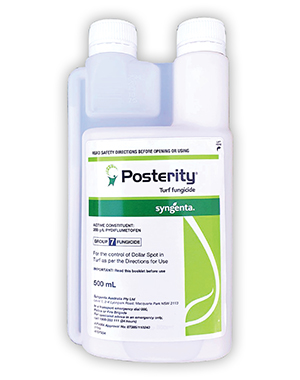
Syngenta Posterity Turf 500ml contains the active ingredient pydiflumetofen (200g/L) and is suitable for Zoysia, Kikuyu, Couch and Buffalo grasses.
SHOP NOW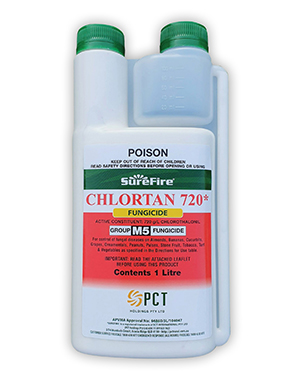
SureFire Chlortan 720 1L contains the active ingredient chlorothalonil (720g/L) and is suitable for Zoysia, Kikuyu, Couch and Buffalo grasses.
SHOP NOW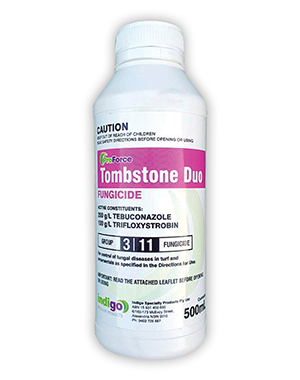
Indigo Tombstone Duo 500ml contains the active ingredients tebuconazole (200g/L) and trifloxystrobin (100g/L) and is suitable for Zoysia, Kikuyu, Couch and Buffalo grasses.
SHOP NOWYou can browse these and other fungicides in the myhomeTURF online shop.